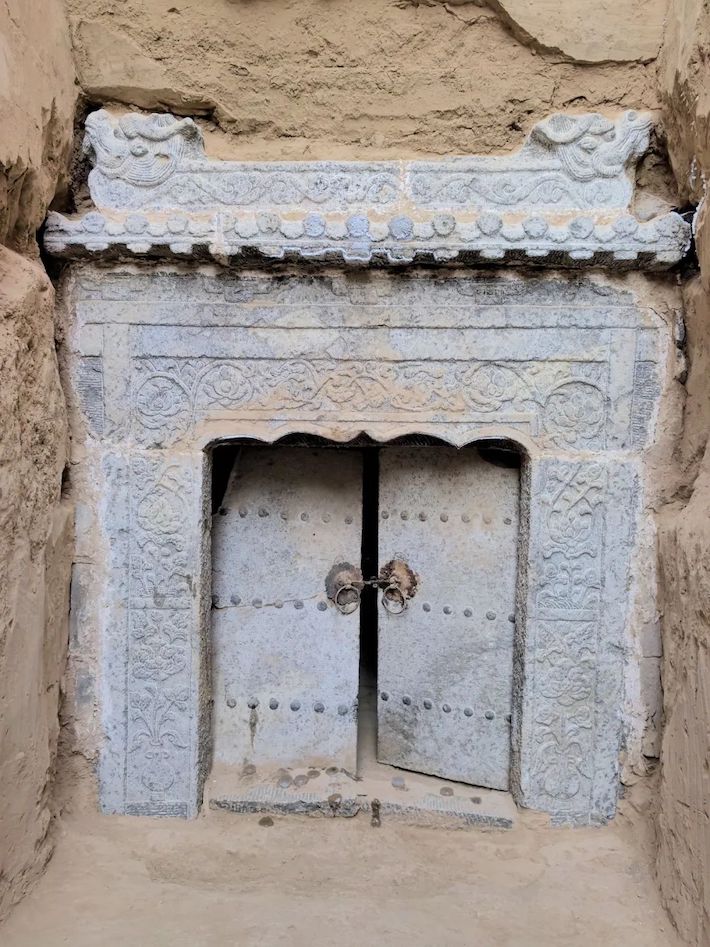 XI'AN, CHINA—According to a report in The Miami Herald, archaeologists from the Shanxi Provincial Institute of Archaeology have uncovered a 400-year-old stone tomb dated to the Ming Dynasty in the Xinfu District, located some 300 miles southwest of the capital, Beijing. The incredibly well-preserved grave spans more than 80 feet and includes two burial chambers and niches sealed with a stone tomb gate, as well as a set of carved ornamental double doors that feature dragons. Its passageway is inscribed with text that reads, “Epitaph of the Prince of Ming Ru Hou'an.” The main chamber holds two intricately decorated wooden coffins painted with gold diamonds and other colorful floral and bird patterns. The niches contain several porcelain vases and jars containing grain, oil, and liquids. In the smaller back chamber, archaeologists found fine wooden furniture, including tables, chairs, and altars in various state of ruin; candlesticks and lampstands; tin cups and pots; and writing tools such as inkstones and Chinese calligraphy implements. Over 60 additional tombs have been excavated as part of explorations before nearby highway construction commences. To read more about the archaeology of the Ming Dynasty, go to “China’s River of Gold.”
XI'AN, CHINA—According to a report in The Miami Herald, archaeologists from the Shanxi Provincial Institute of Archaeology have uncovered a 400-year-old stone tomb dated to the Ming Dynasty in the Xinfu District, located some 300 miles southwest of the capital, Beijing. The incredibly well-preserved grave spans more than 80 feet and includes two burial chambers and niches sealed with a stone tomb gate, as well as a set of carved ornamental double doors that feature dragons. Its passageway is inscribed with text that reads, “Epitaph of the Prince of Ming Ru Hou'an.” The main chamber holds two intricately decorated wooden coffins painted with gold diamonds and other colorful floral and bird patterns. The niches contain several porcelain vases and jars containing grain, oil, and liquids. In the smaller back chamber, archaeologists found fine wooden furniture, including tables, chairs, and altars in various state of ruin; candlesticks and lampstands; tin cups and pots; and writing tools such as inkstones and Chinese calligraphy implements. Over 60 additional tombs have been excavated as part of explorations before nearby highway construction commences. To read more about the archaeology of the Ming Dynasty, go to “China’s River of Gold.”
Ming Dynasty Tomb Found in China’s Xinfu District
